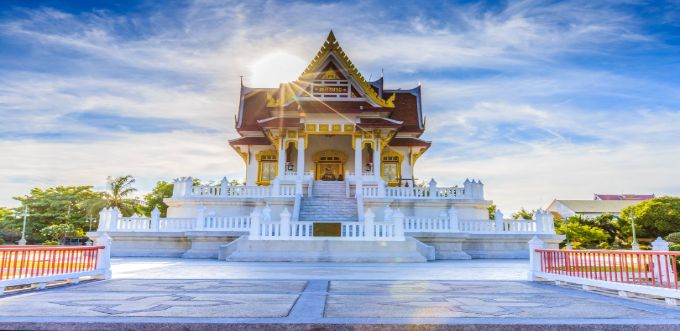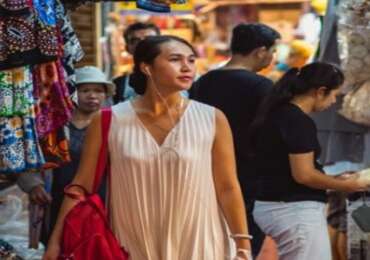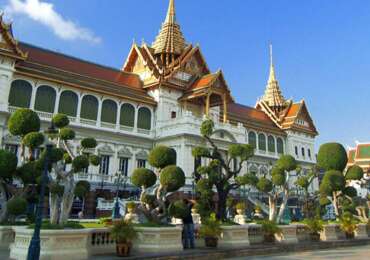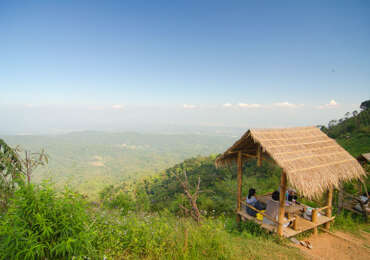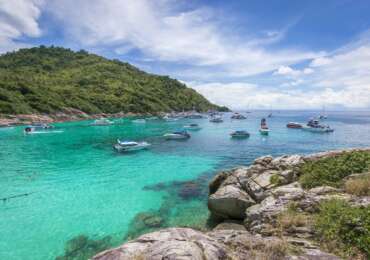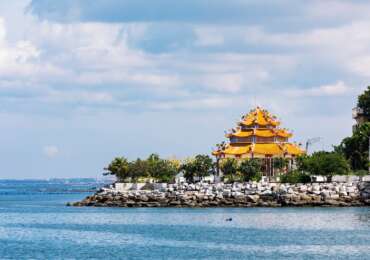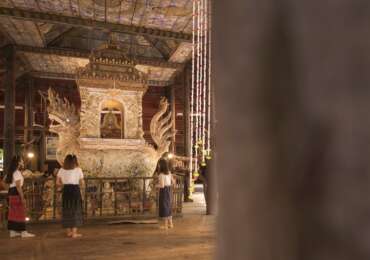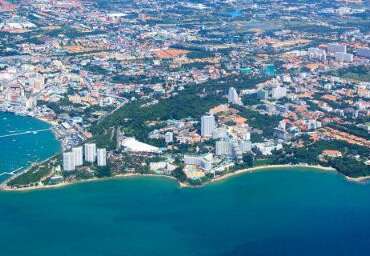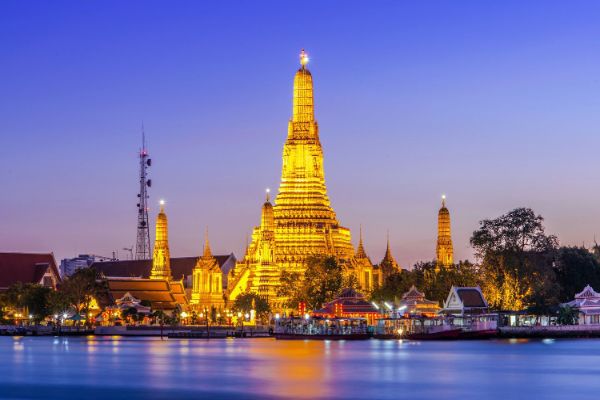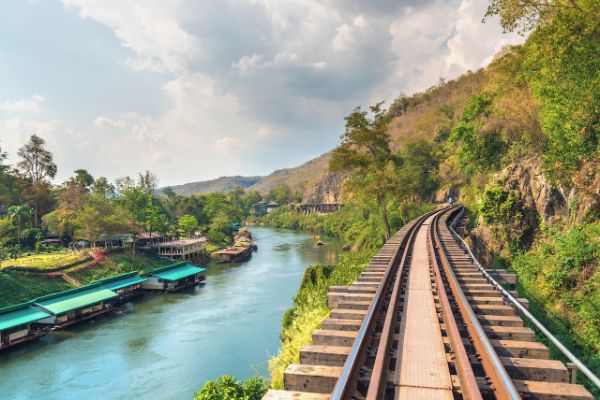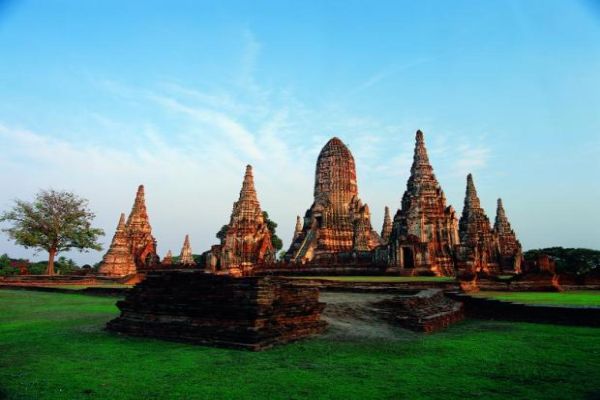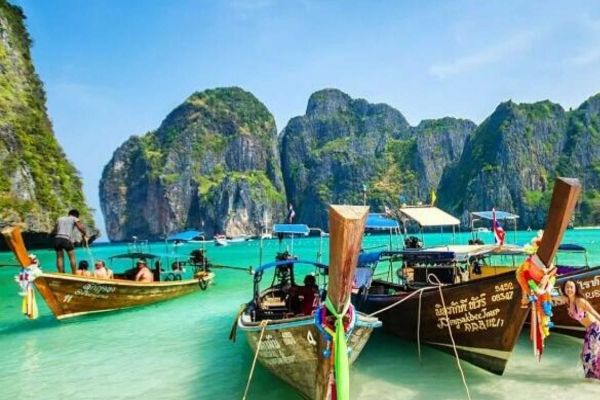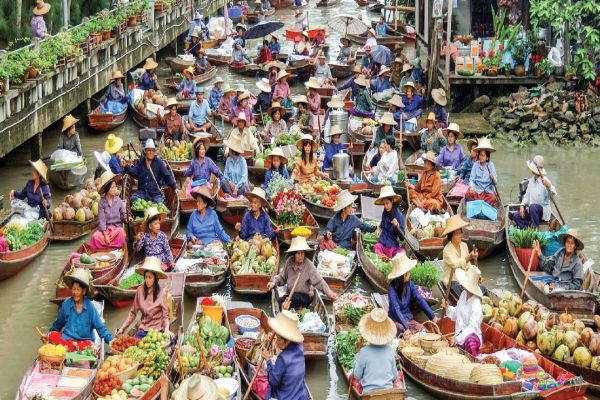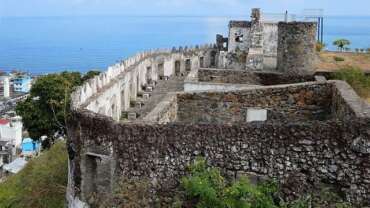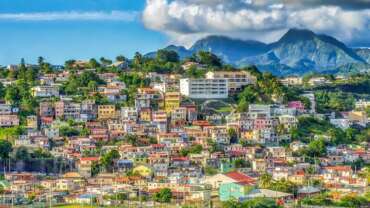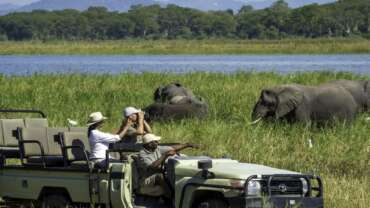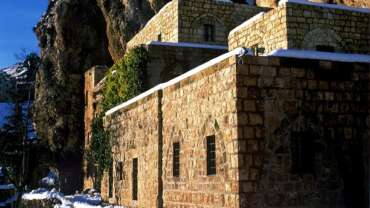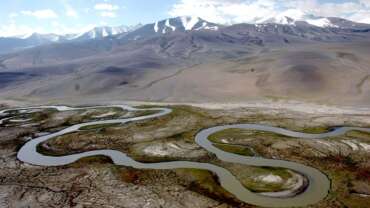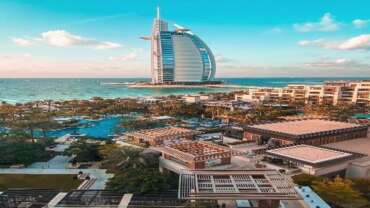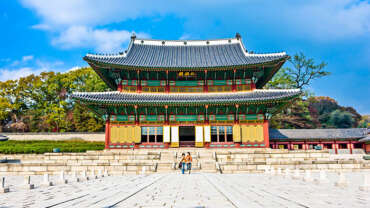Amazing Thailand
Thailand, country located in the centre of mainland Southeast Asia. Located wholly within the tropics, Thailand encompasses diverse ecosystems, including the hilly forested areas of the northern frontier, the fertile rice fields of the central plains, the broad plateau of the northeast, and the rugged coasts along the narrow southern peninsula.
Until the second half of the 20th century, Thailand was primarily an agricultural country, but since the 1960s increasing numbers of people have moved to Bangkok, the capital, and to other cities. Although the greater Bangkok metropolitan area remains the preeminent urban centre in the country, there are other sizable cities, such as Chiang Mai in the north, Nakhon Ratchasima (Khorat), Khon Kaen, and Udon Thani in the northeast, Pattaya in the southeast, and Hat Yai in the far south.
Siam, as Thailand was officially called until 1939, was never brought under European colonial domination. Independent Siam was ruled by an absolute monarchy until a revolution there in 1932. Since that time, Thailand has been a constitutional monarchy, and all subsequent constitutions have provided for an elected parliament. Political authority, however, has often been held by the military, which has taken power through coups. During the last two decades of the 20th century and the first decade of the 21st, parliamentary democracy steadily gained wider popular support. Although a crisis emerged in 2006, when the military, aligned with the monarchy, overthrew an elected government, new parliamentary elections were held—as promised by the interim government—in 2007.
Thailand, which has about the same land area as Spain or France, consists of two broad geographic areas: a larger main section in the north and a smaller peninsular extension in the south. The main body of the country is surrounded by Myanmar (Burma) to the west, Laos to the north and east, Cambodia to the southeast, and the Gulf of Thailand to the south. Peninsular Thailand stretches southward from the southwestern corner of the country along the eastern edge of the Malay Peninsula; Myanmar extends along the western portion of the peninsula as far as the Isthmus of Kra, after which Thailand occupies the entire peninsula until reaching its southern border with Malaysia at roughly latitude 6° N.
History of Thailand
EARLIEST History
Fossilized remains of plants and animals have been discovered in many areas of Thailand, particularly in the Korat Plateau in northeastern Thailand. Most of the animal fossils found are of dinosaurs, which date primarily to the Jurassic era though some are from the late-Triassic, the oldest such evidence of dinosaurs in Southeast Asia.
The dinosaur bones encased in sandstone in the Phu Wiang hills of Khon Kaen province included Phuwiangosaurus sirindhornae, a gigantic plant-eating dinosaur that had a long neck and tail and a small head.
Four other species of dinosaur unearthed in Phu Wiang include Siamotyrannus isanensis, a smaller version of Tyrannosaurus rex, Siamosauraus suteethorni, a crocodile-like creature, Compsognathus, the world’s smallest dinosaur, and Ornithomimosaur, an ostrich-like dinosaur.
In nearby Chaiyaphum province two other new dinosaur species were discovered: Psittacosaurus sattayaraki, a parrot-billed dinosaur, and Isanosaurus attavipachi, which is similar to Phuwiangosaurus.
Homo erectus fossils have also been discovered in Thailand. Known as the Lampang man for its discovery in Lampang province, the remains have been dated to roughly 1,000,000 – 500,000 years ago in the Pleistocene Era.The first evidence of humans living in modern-day Thailand was discovered at Ban Chiang, near Udon Thani in northeastern Thailand; grave sites and artifacts including bronze tools and pottery provide evidence of a society that is thought to have had knowledge of rice cultivation and occupied the area continuously from 2100 to 200 BCE, spanning the Neolithic to the Iron Age.
PRE-THAI KINGDOMS
Over the centuries leading up to the era of recorded history, Thailand was first peopled by Mon and Khmer groups and later by the Tai, an ethnic group that migrated from southern China to Vietnam and gradually into Laos and northern Thailand.
In the first millennium of the Common Era, Tai people had dispersed across YuSearch-result/tagword/Nan”>Nan, Vietnam, Laos, Thailand, and Myanmar fragmenting into various linguistic sub-sects. Relatively minor players in the region throughout this period, the Tai inhabited the northernmost reaches of Southeast Asia, sandwiched between the kingdoms of Nan Zhao, Pyu, and Angkor.
Beginning in around the 2nd century CE, the Srivijaya Empire of Sumatra expanded its reach up the Malaysian Peninsula into southern Thailand. Nakhon Si Thammarat and Chiaya, Surat Thani were founded during this period to facilitate trade across the Isthmus of Kra.
Around the 6th to the 9th centuries, the fertile central plains were inhabited by a Mon civilization known as Dvaravati. Distinct from its neighboring kingdoms of Chenla and Angkor, Dvaravati remains a mysterious civilization that established cities surrounded by moats and earthen walls, with Lopburi serving as an important religious center and Nakhon Pathom near Bangkok possibly its ‘capital’. While much is unknown about this realm, the Dvaravati had well established internal and external trading routes that were important to the development of Thailand and left a wealth of Buddhist artwork that testifies to the great influence Indian Culture and religion had on the region.
From the 9th to the 11th centuries the Khmers of Angkor expanded their kingdom to include most of modern-day Thailand, with important provincial cities established at Phimai, Lopburi and even Nakhon Si Thammarat. Over several centuries many facets of the Khmer culture were imposed on/absorbed by the native population, which was becoming increasingly Tai as those populations migrated south. The temples at Phanom Rung, Phimai, and Lopburi are enduring testaments to this period of Thai history.
Throughout the reign of Angkor, Lopburi often asserted its independence and was clearly an important center for burgeoning Syam culture. The Chinese, who referred to emissaries from the region as representing “Hsien” or Siam (as it was apparently pronounced) documented a request from Lopburi requesting independence from Angkor as early as 1001.
In northern Thailand, Buddhist scholars from Lopburi founded a city-state known as Haripunjaya in Lamphun, northern Thailand around the 9th century (a Mon enclave that remained independent until the 13th century). Elsewhere in the north, the Tai people were fanning out and establishing their own city states, notably at Chiang Saen, where one of the first powerful Thai kingdoms, Lan Na, was originally established in the 12th century. The establishment of Lan Na, Sukhothai, and Phayao, three allied kingdoms founded by contemporary leaders, represents the beginning of the Thai history as we know it.
SUKHOTHAI
Thais began to emerge as a dominant force in the region in the 13th century, gradually asserting independence from existing Khmer and Mon kingdoms. Founded by Khun Pha Muang and Khun Bang Klang Thao in 1238, the Kingdom was named by its rulers “the dawn of happiness”. The Sukhothai Period is often considered the golden era of Thai history, an ideal Thai state in a land of plenty governed by paternal and benevolent kings, the most famous of whom was King Ramkamhaeng the Great (c.1279-98), who greatly expanded the Kingdom’s borders.
In addition to developing some of the most beautiful Thai art, the Sukhothai Kingdom is credited with developing the modern Thai alphabet. However, following the death of King Ramkamhaeng, the mightier state of Ayutthaya gradually exerted its influence over Sukhothai.
Following the death of King Ramkhamhaeng, the kingdom of Sukhothai rapidly declined and Lan Na expanded its influence over its neighboring kingdoms, many of which were former suzerains of Sukhothai. In the middle of the 15th Century Lan Na arts and literature reached a pinnacle during the King Tilokoraj period. However, after the king’s death, Lan Na weakened due to internal conflicts and Chiang Mai fell under Burmese control around 1564; while the Burmese occupied the northern region for a few centuries, they did little development, using Chiang Mai as a military base from which to battle the Kingdom of Ayutthaya, a mighty kingdom in the central plains that was gradually exerting its influence from the mid 14 th century onwards.
AYUTTHAYA
The Ayutthaya kings adopted Khmer cultural influences from the very beginning. No longer the paternal and accessible rulers that the kings of Sukhothai had been, Ayutthaya’s sovereigns were absolute monarchs and assumed the title devaraja (god-king). The early part of this period saw Ayutthaya extend its sovereignty over neighboring Thai principalities and come into conflict with its neighbors. During the 17th century, Siam started diplomatic and commercial relations with western countries. In 1767, after repeated attempts, the Burmese invaded and successfully captured Ayutthaya.
Despite their overwhelming victory, the Burmese did not retain control of Siam for long. A young general named Phya Taksin and his followers broke through the Burmese lines and escaped to Chantaburi. Seven months after the fall of Ayutthaya, he and his forces sailed back up the Chao Phraya River to Ayutthaya and expelled the Burmese occupation garrison, though tragically the capital had been looted and nearly razed.
Thonburi
General Taksin, as he is popularly known, decided to transfer the capital from Ayutthaya to a site nearer to the sea, a move that would facilitate foreign trade, ensure the procurement of arms, and make defense and withdrawal easier in case of a renewed Burmese attack. He established his new capital at Thon Buri, on the west bank of the Chao Phraya River, opposite modern-day Bangkok. The rule of Taksin was not an easy one. The lack of central authority since the fall of Ayutthaya led to the rapid disintegration of the kingdom, and Taksin’s reign was spent reuniting the provinces.
RATTANAKOSIN
After Taksin’s death, General Chakri (Rama I) became the first king of the Chakri Dynasty, ruling from 1782 to 1809. His first action as king was to transfer the royal capital across the river from Thon Buri to Bangkok and build the Grand Palace. Rama II (1809-1824) continued the restoration begun by his predecessor. King Nang Klao, Rama III (1824-1851) reopened relations with Western nations and established trade with China.
King Mongkut, Rama IV, (1851-1868) may have achieved western fame through the story “The King and I”, but won the hearts of Thais for his accomplishments including the establishment of treaties with European countries, thus avoiding colonialization, and modernizing Thailand through many social and economic reforms. King Chulalongkorn, Rama V (1869-1910) continued his father’s tradition of reform, abolishing slavery and improving the public welfare and administrative systems.
Educational reforms, including compulsory education, were introduced by King Vajiravudh, Rama VI (1910-1925). During the reign of King Prajadhipok, Rama VII (1925-1935), Thailand changed from an absolute monarchy to a constitutional monarchy. The king abdicated in 1933 and was succeeded by his nephew, King Ananda Mahidol Rama VIII (1935-1946). The country’s name was changed from Siam to Thailand with the advent of a democratic government in 1939. Our current monarch, King Bhumibol Adulyadej (R. Jun. 9, 1946 – present), is King Rama IX of the Chakri Dynasty.
People of Thailand
When the modern political boundaries of Thailand were fixed at the end of the 19th century and in the first part of the 20th, the country included peoples of diverse cultural, linguistic, and religious backgrounds. This diversity is characteristic of most Southeast Asian countries, where shifting political boundaries have done little to impede the centuries-long migrations of people. Thailand’s central position on the mainland has made it a crossroads for these population movements.
Although the vast majority of the inhabitants of Thailand are descendants of speakers of Tai languages who have been dominant in the area since the late 13th century, the population also includes numerous non-Tai peoples. Members of the largest indigenous minority speak a dialect of Malay. Other significant indigenous minorities include speakers of Mon, Khmer, and other Mon-Khmer languages of the Austroasiatic family. In the uplands of western and northern Thailand are found peoples who speak languages belonging to several other language families. Thailand is also home to large numbers of immigrants and their descendants, most from China but some from South Asia. Most members of indigenous and immigrant communities in Thailand identify strongly with Thai national culture and are speakers of Thai.
The ancestors of the Thai first entered the central part of the Southeast Asian mainland about 1000 CE and began establishing independent principalities in the 13th century. It was once thought that the ancestors of the Thai came from southwestern China, but strong linguistic evidence has emerged that places the original home of Tai-speaking peoples in what is today northwestern Vietnam. The Tai who settled in the area now belonging to Thailand brought with them cultural characteristics shaped by contact with the Chinese.
In their new home, they were influenced by Khmer and Mon peoples, whose traditions largely originated in India. The Tai who became dominant in the 13th century ultimately combined the linguistic, cultural, and sociopolitical heritage of their Tai ancestors with the Buddhism of the Mon and the statecraft of the Indianized Khmer to form what would become a distinctive Thai culture.
In contemporary Thailand, those who accept a national identity as Thai include not only the Tai-speaking people of central Thailand but also several other Tai-speaking groups, the largest of which are the Lao-speaking peoples of northeastern Thailand and the Kammüang-speaking peoples of the northern part of the country.
Art & Culture of Thailand
The arts
Literature
Traditional Thai literature was deeply connected to the literature of both Buddhist and Hindu India. The best-known story of the premodern period—as recounted in sermons by monks and depicted in temple paintings—was that of Prince Wetsandorn (Vessantara). This story is the last and most important of the Jataka tales (i.e., stories about people or animals who were the Buddha in a previous life). Wetsandorn was a prince who was compelled to give away his wife and children to realize the last qualification necessary to be reborn as the Buddha.
The gods restored his family to him when he succeeded in proving he had no attachments. Almost as important as this story was that of the Hindu deity Rama as told in the Ramakian, a Thai adaptation of the Hindu epic Ramayana. Rulers since the 15th century have identified themselves with Rama, and the Grand Palace in Bangkok contains extraordinary murals that depict his story.
Alongside the literature derived from Buddhism and India, indigenous literary traditions have always existed in Thailand. Kings were patrons of royal poets, and villages had rich traditions of folklore and legends recited by troubadour-like performers or enacted by local opera troupes. One story with both royal and popular versions is that of Khun Chang and Khun Phaen, two men in competition for the affections of the same woman.
Following the large-scale migration of Chinese to Thailand beginning in the mid-19th century, numerous Chinese assimilated to Thai culture, and a number of well-known works of Chinese traditional literature were translated into Thai. One of the first of these was the Chinese literary work Sanguozhi yanyi (“Romance of the Three Kingdoms”). The story has since been adapted in Thai plays, poems, and stories.
Modern Thai poetry has its origins in the work of Sunthon Phu (1787–1855), whose 30,000-line epic, Phra Aphaimani, named for the central figure, is the country’s best-known work of literature. Echoes of that epic can be found in the writings of contemporary poets such as Naowarat Phongphaiboon, Angkarn Kalayanapong, and Chiranan Pitpreecha, who merge traditional verse forms with Western-influenced styles and themes.
The novel, based on Western models, began to develop in Thailand in the 20th century. The first novels were written in the 1930s by such authors as Dokmai Sot (pen name of Buppha Kunchon) and Siburapha (Kulap Saipradit), both of whom have remained popular in the 21st century. The early audience for fiction was drawn from what was then a tiny middle class. As the economy expanded after World War II, so too did the reading public. The novel Si phaen din (Four Reigns), first published in serial form in the newspaper Siam Rath in 1953, is probably the best-selling Thai novel of all time.
The author, Kukrit Pramoj (1911–95), whose title (Mom Rajawong) indicates he was a descendant of a king, later became well-known as a politician (serving as prime minister in the mid-1970s) and as the publisher and editor of Siam Rath. Four Reigns is a portrayal of the experiences of a family under four consecutive kings—from the end of the reign of King Chulalongkorn in 1910 to just after the death of King Ananda in 1946. The story is told from the point of view of a woman, Mae Ploi, who early in life was attached to the royal household and whose family’s history is deeply connected with that of the court. The novel has been considered influential in shaping a positive image of the monarchy.
While much contemporary literature has centred on issues of love and family, topics that are particularly popular among the middle class, Thai authors have also produced works that explore issues of social inequality, sexual exploitation, and political corruption. Much of the writing of Lao Khamhom (Khamsing Srinawk), for instance, focuses on rural people, often carrying a subversive political implication. A wave of writing categorized under the rubric “Literature for Life” appeared in the 1960s and ’70s. Works in this vein were in essence a manifestation of Socialist Realism; although instrumental in catalyzing the toppling of the government in 1973, they were not widely popular.
Since the 1980s, other prose writers, such as Seni Saowaphong and Chart Korbjitti, have also focused on social issues, accumulating large followings within their country and earning literary honours abroad. Chart’s work contrasts notably with that of the Literature for Life authors in that it forces readers to draw their own conclusions from the details rather than blatantly blaming a particular sector of society. Many writers have adapted their work for film.
Cultural Life
Prior to the modernizing reforms begun in the late 19th century under King Chulalongkorn, Thai cultural life revolved around the Siamese royal court and the wat, the Buddhist temple-monastery. Many ancient practices associated with the court and the wat have been transformed into elements of contemporary Thailand’s national heritage. The monarchy, through its participation in royal functions, state ceremonies, and popular festivals, plays an important role in nurturing and preserving this heritage. Many state functions, today often shown on television, begin with the king or other members of the royal family performing Buddhist rites.
Certain Buddhist holy days have been recognized as national holidays. Among these are Visakha Puja, the festival celebrating the birth, enlightenment, and death of the Buddha, and the beginning and end of “Buddhist Lent” (phansa)—a three-month period corresponding to the monsoon season, during which both monks and laypeople give added attention to religious practices such as meditation.
The transformation of Thai cultural life is particularly evident in clothing. In the late 19th century, members of the Thai court began to adopt Western-style clothing and for a few years in the late 1930s and early ’40s such clothing was mandatory. In the post-World War II period there was a significant revival of traditional styles of clothing, especially for women. The queen adopted the tie-dye silk tubular skirt traditionally worn by Lao women in the northeast, and she was widely emulated by middle- and upper-class women when they attended events at which national culture was expected to be on display.
For everyday attire in both the cities and the villages, however, most people wear clothing of a style that is considered “cosmopolitan” (sakon), but which, in fact, derives from Western styles. For all its Western influences, however, contemporary Thai culture is a creative blend that remains clearly rooted in Thai tradition.
Amazing Experiences in Thailand

Thailand is a gorgeous country located at the centre of the Indochina peninsula in the mainland of South East Asia. The country shares borders with Laos and Cambodia in the East, Myanmar in the North, Anadman Sea in the west and with the Gulf of Thailand in the South.
The tropical beaches of Thailand attract throngs of visitors every year. You can get a tan on one of its many beaches or enjoy the many water sports available for those looking for the ultimate adrenaline rush. Also known for its massages, it may be a good idea to get a relaxing back massage from one of the masseuse by the beach.
Ornate Buddha deities and its glittering Thai temples are a major attraction here and the Wat Phra Kaew is an absolute don’t miss. There are many royal palaces that one can visit in Thailand. Sprawling gardens and beautiful architecture greet you at the abode of the royalty. One can also check out the ancient ruins at places like Ayuthaya and visit one of the many tiger temples in Thailand. Thailand is also known for its street food. It offers an opportunity to bite into different kinds of delicacies at roadside restaurants. The fruit platters being sold at every nook and corner are a must have.



